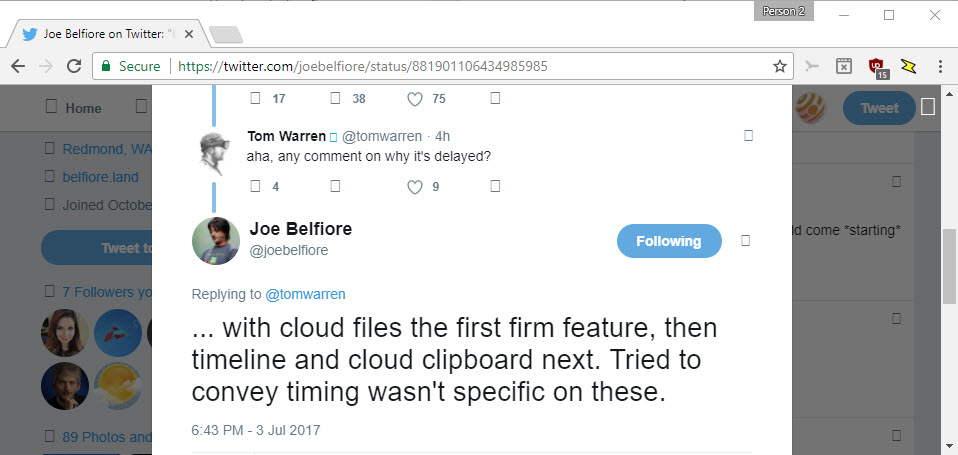Too many Windows 10 feature updates?
Microsoft announced a while ago that it plans to release two feature updates for its Windows 10 operating system per year.
This year -- 2017 -- saw the release of the Windows 10 Creators Update back in March, and will see the release of the Fall Creators Update in September/October (anyone wondering if Microsoft will keep the names of the updates linked to each other in the coming years?).
The Creators Update brought along with it new features such as App Groups in the Start Menu, Mixed Reality support, Game Mode, or Dynamic Lock.
Some features like My People were postponed however, and will come out in the Fall Creators Update later this year.
Today, Joe Belfiore revealed that Windows 10 Timeline won't be included in the Fall Creators Update release, but will be released in the feature update that comes next (probably around the time the Creators Update was released).

Timeline was revealed back in May 2017. While the full functionality of Timeline is not entirely clear, the part that was revealed gives users a view of the apps that they used on all their devices, and an option to continue where you left off.
Joe revealed as well that another feature, Cloud Clipboard, will be part of the next feature update after the Fall Creators Update.
One could argue that Microsoft has a bit of a timing issue when it comes to feature announcements for the next version of Windows.
Fans of Windows want to know what Microsoft plans to release in the next feature update. Microsoft on the other hand needs to weight showing features to the public against the possibility that they won't make it in the next update.
It is better obviously to delay a feature release than to ship a weak version of it with the operating system just so it makes the cut.
One has to ask whether this can be attributed to the rapid release cycle of Windows 10. If features are announced but then not ready to be included in a feature update, and any feature update is just six months away on average, Microsoft either has to make sure that these feature announcements are only made when the company is certain that a feature makes it into the next feature update, or consider changing the release cycle to give developers enough time to ensure that.
One possibility for the latter would be to designate one of the two feature updates as a major update, and the other as a minor update. This would still serve the purpose, and would probably also help organizations and end users in regards to updates. A minor feature update might on average require less testing than these feature updates that Microsoft pushes out right now.
Now You: What's your take on this?
This article was first seen on ComTek's "TekBits" Technology News

- Log in to post comments